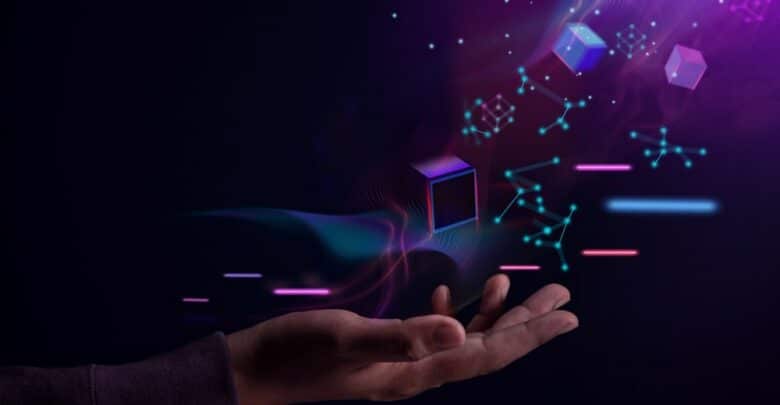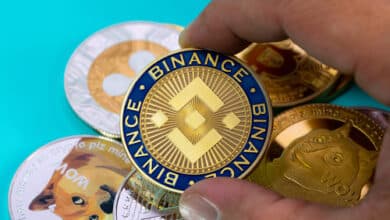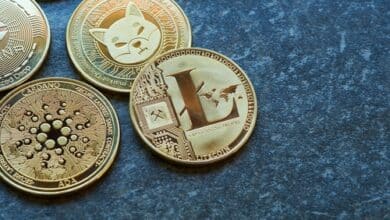
The digital revolution has revolutionized content creation, particularly with the emergence of Web2. This era enabled a new generation of content creators to produce, share, and consume online content freely. However, Web2’s centralized architecture had inherent limitations, leading to content ownership and monetization disparities. Enter Web3, the next phase of the internet’s evolution. In this guide by Tokenhell, explore the transformative impact of Web3 on content creator ownership, providing a comprehensive understanding of the Web3 landscape.
Navigating the Shift: Embracing the Evolution from Web2 to Web3
To fully grasp the transformative potential of Web3, it is necessary to confront the limitations of Web2 on content creators. Web2, the second phase in the Internet’s evolution, revolutionized online interaction by turning it into a dynamic ecosystem of interactive platforms. Content creators gained unprecedented means of expression and global reach through platforms like YouTube, Instagram, and Twitter. However, despite democratizing content creation, Web2 had inherent constraints.
Centralization lies at the heart of Web2’s architecture. Content distribution platforms are controlled by a few corporate entities, exerting control over the circulated content and claiming a significant share of creators’ revenue. This leaves content creators vulnerable to the whims and regulations imposed by these entities, raising concerns about ownership and profitability.
Web3, on the other hand, revolves around decentralization, leveraging blockchain technology to replace intermediaries with decentralized networks. These networks operate on peer-to-peer connections, shifting control from centralized entities to individual users.
This transition from Web2 to Web3 marks a profound content creation, sharing, and monetization shift. The decentralized nature of Web3 eliminates the need for central authorities, fostering a more equitable distribution of value. Content creators no longer have to conform to regulations set by centralized entities and can exercise complete ownership over their creative outputs.
Furthermore, blockchain’s transparent and immutable nature ensures that every transaction and content interaction is recorded and verified. This establishes clear digital ownership rights for creators, ensuring fair rewards for their work.
Exploring the Notion of Ownership in the Web3 Era
Compared to physical asset ownership, the concept of digital ownership in Web2 differs significantly. When consumers purchase a digital item, such as an eBook or a song, they acquire a usage license with limitations imposed by centralized platforms. These restrictions often include non-transferability and limited usage, resulting in an imbalanced ownership framework.
However, the emergence of Web3 brings a transformative paradigm shift, where digital assets can be owned outright, akin to physical assets. Blockchain technology empowers this form of ownership, surpassing access rights and licenses. It grants complete control over digital assets, enabling seamless transfer, sale, and modification, eliminating the need for intermediaries.
This revolution holds immense potential for content creators. Through Web3, creators can mint their digital creations as unique assets on the blockchain, establishing an undeniable link to ownership. The blockchain ensures immutability, transparency, and independence from central authorities. Consequently, creators retain complete control over their content and gain the autonomy to determine how they want to monetize it, whether through sales, licensing, or alternative means.
Unveiling the Impact of NFTs on Ownership for Content Creators
The advent of Non-Fungible Tokens (NFTs) has brought about a transformative shift in content creation. These unique cryptographic tokens, residing on a blockchain, have revolutionised how digital content is perceived, valued, and exchanged by providing indisputable proof of ownership and origin.
Unlike fungible cryptocurrencies like Bitcoin or Ethereum, NFTs are distinct entities that cannot be readily exchanged like-for-like. Each NFT possesses its metadata, endowing it with different characteristics and rendering it non-interchangeable.
For content creators, the introduction of NFTs bears immense significance. Through tokenizing their creations as NFTs, creators effectively create a digital certificate of ownership, permanently recorded on the blockchain. This transparent and immutable certificate not only guarantees the uniqueness of the content but also unequivocally establishes rights.
Introducing NFTs presents a groundbreaking avenue for creators to monetize their work. The inherent uniqueness of NFTs allows creators to market their content as the most significant digital assets. Furthermore, the blockchain serves as an immutable ledger, meticulously recording every transaction involving the NFT. This preserves the provenance of the content and ensures that the creator’s association remains intact, even after subsequent sales.
Moreover, NFTs can be endowed with smart contracts, enabling automatic royalty payments to creators whenever the token is sold or transferred. This groundbreaking feature ensures that creators can continuously benefit from their work, even as its value appreciates over time and changes hands.
The Influence of Smart Contracts on Content Creation and Earning Potential
Smart contracts are crucial in the Web3 ecosystem, offering a revolutionary way to automate transactions through code. These self-executing contracts eliminate the need for intermediaries, legal systems, and external enforcement mechanisms. By defining and enforcing the terms of an agreement, smart contracts ensure seamless and efficient transactions.
In the realm of content creation, smart contracts bring forth numerous possibilities. One significant application is the creation and enforcement of licensing agreements. Unlike traditional deals that often involve complex and third-party interventions, smart contracts automate and enforce the terms directly through code, reducing the chances of misinterpretation and disputes.
Moreover, smart contracts enable content creators to explore innovative revenue models. They can encode contracts to distribute royalties whenever their content is resold or used automatically. This functionality, coupled with the unique ownership facilitated by non-fungible tokens (NFTs), empowers creators to maintain control over their work and receive fair compensation for the value it generates over time.
Another essential advantage of smart contracts is the transparency and trust they bring to transactions. Each transaction is publicly recorded and verifiable on the blockchain, significantly minimizing the risks of disputes and fraudulent activities. This aspect holds particular importance for content creators who often face unauthorized usage and plagiarism challenges.
In summary, smart contracts revolutionize how agreements are formed and executed in the Web3 landscape. By automating and enforcing terms through code, content creators benefit from streamlined licensing agreements, innovative revenue models, increased transparency, and enhanced protection of their intellectual property rights.
The Impact of DAOs on Ownership Rights for Content Creators
The advent of Decentralized Autonomous Organizations (DAOs) has brought forth a revolutionary aspect of the Web3 landscape, potentially reshaping the dynamics among content creators, consumers, and platforms. These DAOs operate under the governance of smart contracts and are collectively managed by their members, eliminating the need for a centralized authority.
For content creators, the rise of DAOs introduces an innovative model emphasising collaborative management and decision-making. By actively participating in a DAO, creators become part of a community that collectively determines content creation, distribution, and monetization rules. This marks a significant departure from the conventional Web2 paradigm, where centralized platforms predominantly control such pivotal decisions.
Within a DAO, each member holds a stake and has a voice in the decision-making process, typically in proportion to their investment in the organization. This includes decisions related to revenue sharing, content policies, platform development, and more. Consequently, content creators have a unique opportunity to actively contribute to shaping platforms and communities that facilitate the distribution and monetization of their work.
Moreover, DAOs have the potential to foster collaborative content creation and ownership. Picture a scenario where multiple creators collaboratively produce a piece of content, with each individual contributing their expertise to different aspects of the project. Using a DAO, the rights and revenues generated from this content can be automatically and equitably distributed among the creators, thanks to the implementation of smart contracts.
Navigating the Hurdles of the Web3 Transition
The emergence of Web3 technologies has opened doors to transformative possibilities for content creators. However, embracing this transition comes with challenges that demand attention and resolution to ensure a smooth and advantageous shift.
One key obstacle lies in the technical complexity of blockchain, smart contracts, and NFTs, which can overwhelm non-technical individuals. To bridge this gap, educational initiatives and user-friendly tools are essential to enhance accessibility.
Regulatory uncertainty poses another significant challenge, with varying rules across jurisdictions. Establishing an ongoing dialogue between tech communities, regulators, and policymakers is vital to create a clean and supportive regulatory environment.
Environmental concerns surrounding energy-intensive proof-of-work consensus mechanisms require continuous innovation for more energy-efficient alternatives.
Additionally, while decentralization offers promise, there is a risk of new centralization and inequality. Balancing decentralization and equitable distribution of benefits is a crucial challenge in the Web3 era.
In conclusion, embracing Web3 presents opportunities and challenges for content creators. By addressing technical complexities, regulatory uncertainties, environmental impacts, and potential inequalities, the Web3 ecosystem can become an inclusive and sustainable space for creators to flourish.
Final thoughts
Web3 has ushered in a transformative era, empowering content creators to redefine ownership, monetization, and audience engagement. Yet, embracing this paradigm shift means tackling challenges, from technical complexities to regulatory uncertainties. Overcoming these hurdles necessitates a comprehensive strategy encompassing education, policy discussions, and technological advancements.
Tokenhell produces content exposure for over 5,000 crypto companies and you can be one of them too! Contact at info@tokenhell.com if you have any questions. Cryptocurrencies are highly volatile, conduct your own research before making any investment decisions. Some of the posts on this website are guest posts or paid posts that are not written by Tokenhell authors (namely Crypto Cable , Sponsored Articles and Press Release content) and the views expressed in these types of posts do not reflect the views of this website. Tokenhell is not responsible for the content, accuracy, quality, advertising, products or any other content or banners (ad space) posted on the site. Read full terms and conditions / disclaimer.





